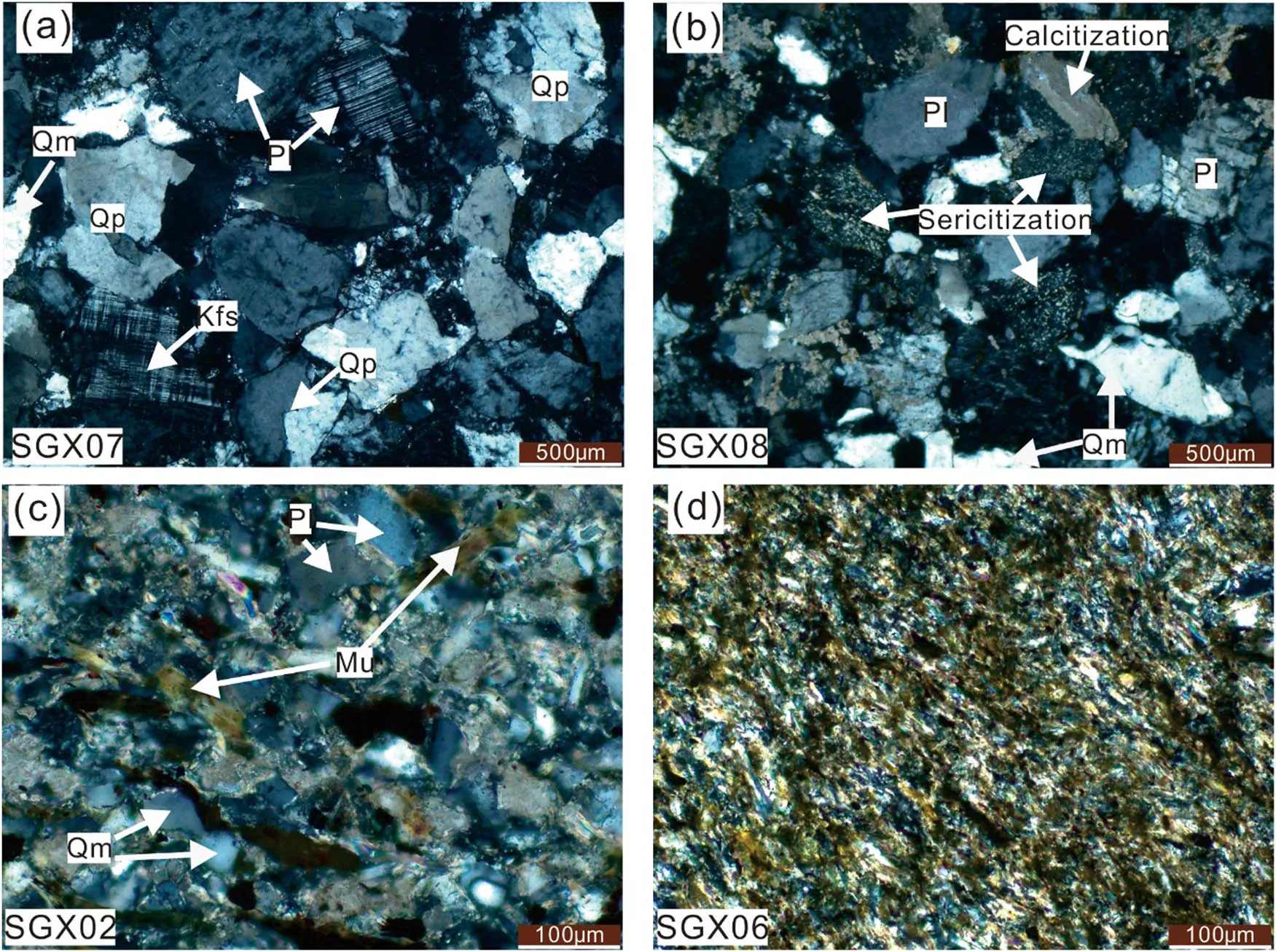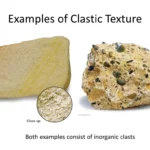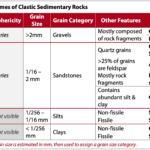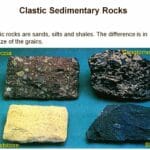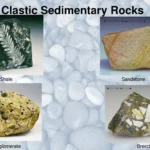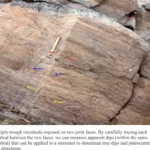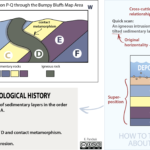Picture this: you’re out on a hike, surrounded by towering cliffs and babbling brooks. But beneath your feet lies a hidden world, a world that holds secrets about the Earth’s ancient past. These secrets are hidden in the rocks, in tiny grains of sand and bits of stone. They’re like clues that, when pieced together, can tell us a story about where these rocks came from and what happened to them over millions of years.
Unraveling the Secrets of Sand and Stones: Provenance Analysis of Clastic Sediments
Imagine a detective trying to solve a mystery by studying a pile of sand and rocks. That’s essentially what geologists do when they perform provenance analysis on clastic sediments, which are microscopic fragments of rocks that have been broken down by rivers, glaciers, and oceans. By carefully examining these tiny particles, geologists can piece together clues about the journey they’ve taken from their source to their final resting place.
Why Bother with Provenance Analysis?
Well, it’s like knowing where your clothes come from. Just as different clothing styles tell us about different cultures, the composition of clastic sediments tells us about the geological history of the area where they were formed. Here’s why it’s important:
- Tectonic Detective Work: Provenance analysis helps us figure out how mountains and basins were formed and how they’ve changed over time.
- Ancient Geography Mapper: It’s like a time machine that shows us where continents and oceans were located millions of years ago.
- Climate and Environmental Storyteller: By analyzing the chemistry of sediments, we can infer what the climate was like and how ecosystems evolved.
How to Uncover the Provenance of Sediments
It’s like a CSI investigation for rocks. Geologists use a combination of techniques:
- Microscope Magic: They examine sediments under a microscope to see their mineral makeup and grain size.
- Chemical Analysis: They use sophisticated instruments to measure the levels of different elements and isotopes in the sediments.
Geochemistry: The Key to Provenance
Chemical analysis is particularly valuable in provenance analysis. Here are some of the clues it reveals:
- Rare Earth Elements: These elements can help us identify the specific types of rocks that the sediments came from.
- Radioactive Isotopes: They tell us about the age and composition of the source rocks.
- Heavy Minerals: These durable minerals can survive long journeys and carry information about their original environment.
Putting It All Together
Provenance analysis is a bit like a puzzle, where each piece of information adds to a clearer picture. By combining all the clues, geologists can paint a vivid story of the sediment’s journey and the geological processes that shaped our planet.
Benefits Galore
Provenance analysis is a powerful tool with many benefits:
- Precise Detective Work: It provides detailed information about the origin and history of sediments.
- Comprehensive Insights: By combining different techniques, it gives us a holistic understanding of sediment composition and transport.
- Field-Spanning Applications: From exploration geology to environmental science, provenance analysis has applications in a wide range of fields.
So, next time you see a pile of sand or rocks, remember that it’s a treasure trove of geological secrets, waiting to be unlocked by the diligent detective work of provenance analysis.
Discover the fascinating world of clastic sedimentary rocks and delve into their formation processes with Weathering and erosion processes. Learn about the mechanisms that transport sediments and the remarkable changes they undergo during Diagenesis and lithification. Explore the diverse sedimentary environments and sequences that shape the Earth’s surface through Sedimentary facies and sequences. Uncover the economic significance of these rocks and the classification systems used to understand their composition and texture with Clastic rock classification systems and Texture and composition of clastic sedimentary rocks. Discover the unique soft-sediment deformation structures and Clastic dikes that provide insights into past geological events. Finally, unlock the secrets of Paleocurrent indicators in clastic rocks to unravel the history of ancient currents and depositional environments.
How Can We Determine the Provenance of Clastic Sediments?
Imagine you’re a detective, trying to solve a mystery about where some sediments came from. Well, geologists are kind of like detectives for rocks, and they use some clever techniques to figure out the origins of clastic sediments. Let’s dive in, step by step:
Peeking at the Grains: Petrographic Analysis
Just like you can tell a lot about a person by their fingerprint, you can learn a lot about sediments by looking at their grains under a microscope. Scientists slice thin sections of the sediments and check out the minerals and textures. Each mineral gives a hint about the source rock.
Chemical Fingerprinting: Geochemical Analysis
Think of sediments like a chemistry experiment. By measuring the amounts of different elements and isotopes (special versions of elements), geologists can create a chemical fingerprint for each sediment. They then compare these fingerprints to known rock types, helping them narrow down the possible source.
Time Travel with Isotopic Tracers
Certain radioactive isotopes, like tiny clocks, decay at a steady pace. Scientists can measure how much of these isotopes have decayed in sediments to estimate their age. They can also trace the sediment’s journey by looking at how the isotopes change along the way.
Putting It All Together
By combining petrographic analysis, geochemical analysis, and isotopic tracers, geologists can piece together the puzzle of where clastic sediments originated from. They can tell us about the type of rocks that formed the sediments, how old they are, and even the journey they took to get there. It’s like a geological treasure hunt!
Table: Provenancing Techniques and Their Importance
| Technique | Information Provided |
|---|---|
| Petrographic Analysis | Mineral composition, grain textures |
| Geochemical Analysis | Chemical fingerprints, element and isotope ratios |
| Isotopic Tracers | Age estimation, sediment journey tracking |
Geochemical Techniques for Identifying Sediment Provenance: Unraveling the Origins of Rocks
Rocks have stories to tell. They can tell us where they came from, how they were formed, and what the ancient world was like. One way to listen to these stories is through geochemical techniques, which analyze the chemical composition of rocks.
Rare Earth Elements: Like Fingerprints for Rocks
Every rock has a unique chemical fingerprint, including rare earth elements (REEs). These elements are like tiny detectives that help us identify where a rock originated. By analyzing REE patterns, scientists can even tell us what type of rock it came from because different types of rocks have different REE concentrations.
Isotopes: Time Travelers in Rocks
Isotopes are like time travelers that have been trapped inside rocks. They can tell us about the past, like how old a rock is and where it came from. Measuring different isotopes of elements like strontium, neodymium, and lead can help us trace the origins of sediments and even determine the age of the rocks they came from.
Geochemical Clues: Pinpointing Multiple Sources
Rocks rarely have just one origin. They often come from a mix of sources, like different types of mountains or ancient volcanoes. Geochemical techniques can help us figure out how much each source contributed to a particular rock. We do this by looking at elements like aluminum, potassium, and titanium, as well as minerals like zircon and garnet.
Benefits of Unraveling Sediment Provenance
Geochemical techniques are like detectives, helping us solve the mystery of where rocks come from. Understanding a rock’s provenance has many benefits:
- It helps us piece together the history of mountains and sedimentary basins, like how they formed and changed over time.
- It lets us reconstruct ancient landscapes and understand how the Earth looked millions of years ago.
- It gives us insights into how sediments were transported and deposited, which is important for understanding the dynamics of our planet.
Key Takeaways:
- Geochemical analysis is a powerful tool for finding out the origins of rocks.
- Rare earth elements and isotopes are like fingerprints and time capsules that provide clues about a rock’s past.
- Understanding sediment provenance helps us reconstruct ancient geological events and landscapes.
By listening to the stories rocks tell through geochemical techniques, we can unravel the mysteries of our planet’s history and gain a deeper understanding of how it came to be the way it is today.
Provenance Analysis and Its Applications in Understanding Geological Processes
We know how detectives solve crimes by analyzing clues. Well, geoscientists are like detectives, but they investigate the history of our planet through the clues hidden in rocks and sediments. One of their secret weapons is provenance analysis, a technique that helps them uncover the origins of sediments and decipher the geological processes that have shaped our world.
Sediments are like tiny time capsules, containing fragments of the rocks they once belonged to. By examining the composition of these sediments, scientists can piece together their journey, from their birthplace to their final resting place in sedimentary basins. This knowledge unlocks a treasure chest of insights into the geological forces that have sculpted our planet.
How Provenance Analysis Helps Us Decode Earth’s Past
Unraveling Tectonic Histories: By finding out where sediments came from, provenance analysis helps us understand how tectonic plates have moved and how mountain ranges have formed. It reveals the processes that have lifted up and eroded ancient landscapes.
Reconstructing Past Environments: Sediments also hold clues about the climate and surroundings in which they were created. By analyzing their composition, we can piece together a picture of ancient landscapes, learning about rainfall patterns, vegetation, and erosion rates.
Predicting Resources: Provenance analysis is like a roadmap for finding mineral or hydrocarbon deposits. By understanding how sediments were transported and deposited, we can pinpoint areas with high potential for these valuable resources.
Key Takeaways:
- Provenance analysis traces the origins of sediments, offering insights into the geological processes that have shaped our planet.
- It helps us understand the movement of tectonic plates and the formation of mountain belts.
- Sediment composition provides clues about ancient climates and environments.
- Provenance analysis guides us towards areas with potential for mineral and hydrocarbon resources.
So, there you have it! Provenance analysis is a fascinating tool that unlocks the secrets of our planet’s past and helps us plan for its future. Next time you see a rock or a handful of sediment, remember that it holds a piece of a much bigger puzzle, waiting to be solved by the detectives of geology.
FAQ
Q1: What is provenance analysis of clastic sediments?
A1: Provenance analysis is a detailed study of clastic sediments, which are formed from the erosion and deposition of pre-existing rocks, to determine their origins and the processes that transported and deposited them. It involves analyzing the composition and characteristics of sediments to infer the nature of their source rocks and the geological history they have undergone.
Q2: Why is provenance analysis important?
A2: Provenance analysis provides valuable insights into past geological processes, including the tectonic evolution of mountain belts, the characterization of sedimentary basins, and the environmental implications of sediment dispersal. It helps reconstruct the geological history of a region, understand the formation and evolution of sedimentary deposits, and assess the potential for mineral resources.
Q3: What techniques are used in provenance analysis?
A3: Provenance analysis utilizes various techniques, including petrography, geochemistry, and isotopic analyses. Petrography involves examining the mineralogical and textural characteristics of sediments under a microscope. Geochemical analysis measures the chemical composition of sediments, including major and trace elements, to identify their source rocks and determine the weathering and depositional processes that have affected them. Isotopic analysis examines the ratios of different isotopes to provide insights into the age and origin of sediments.
Q4: What are some applications of provenance analysis?
A4: Provenance analysis has wide-ranging applications in geology, including:
- Reconstructing paleogeographic maps and understanding the tectonic evolution of sedimentary basins
- Identifying the source regions of sediments and tracing their transport pathways
- Assessing the environmental conditions and climate at the time of sediment deposition
- Evaluating the potential for mineral resources, such as hydrocarbons and precious metals
Q5: What are the challenges in provenance analysis?
A5: Provenance analysis can be challenging due to the complexity and variability of sediment sources and the processes that have affected them. Distinguishing between sediments derived from multiple sources and determining the relative contributions of each source can be difficult. Additionally, sediments may undergo various transformations during transport and deposition, which can alter their original composition and complicate the interpretation of their provenance.
- China II Review: Delicious Food & Speedy Service - April 17, 2025
- Understand Virginia’s Flag: History & Debate - April 17, 2025
- Explore Long Island’s Map: Unique Regions & Insights - April 17, 2025
